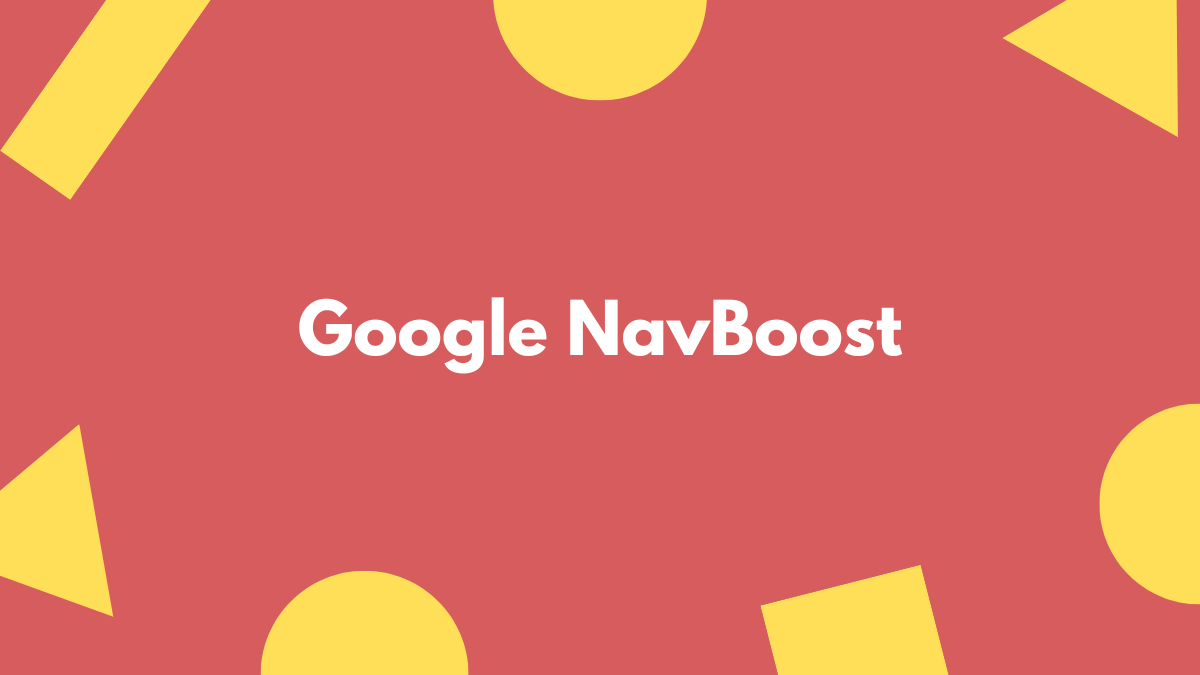Google Navboost is one of the most talked-about search ranking systems today. It’s not just another algorithm. It’s a powerful tool that helps Google decide which search results to show—based on real user behavior.
If you want to know how Google Navboost affects SEO and how to optimize for it, this article breaks it down in the simplest way.
What Is Google Navboost?
Google Navboost is an algorithm that uses real user signals—like clicks, scrolls, and time on page—to improve search results. It has been part of Google Search since 2005 but gained attention in 2023 during a U.S. Department of Justice case.
Navboost helps Google:
- Filter millions of pages down to the most useful
- Show better results for navigation-style queries (e.g., searching for a specific brand or location)
- Learn from how users interact with the search results
How Google Navboost Works
1. It Tracks User Engagement
Navboost records how users behave on search results:
- Good clicks: When a user clicks a result and stays on the page
- Bad clicks: When a user clicks and quickly returns (called “pogo-sticking”)
- Last longest click: The final click where a user spends the most time
These signals are stored for up to 13 months.
2. It Analyzes Behavior by Device and Location
Navboost doesn’t treat every search the same. It breaks down data by:
- Device: Mobile vs desktop
- Location: Where the search happens
This helps Google deliver personalized results that match the user’s context.
3. It Filters Results
Google doesn’t rank every page it finds. Instead, Navboost first filters out less helpful results. It keeps only the most promising ones. Then, Google’s core ranking system (like PageRank, content quality, and E-E-A-T) takes over to sort them.
4. It Works With Other Systems
Navboost works alongside another system called Glue, which manages how users interact with search features like:
- Maps
- Snippets
- Carousels
Together, they shape what the final search page looks like.
Why Navboost Matters for SEO
If users don’t engage with your content, you lose visibility. Navboost rewards pages that offer real value.
Here’s what matters:
- High engagement: More good clicks = higher rankings
- Low bounce rate: Less pogo-sticking = trust
- Long dwell time: More time on site = relevance
Navboost pushes SEO beyond keywords. It emphasizes user experience (UX) and content satisfaction.
How to Optimize for Google Navboost
To stay ahead, follow these SEO tips focused on Navboost signals.
Improve Click-Through Rate (CTR)
- Write clear, eye-catching titles
- Use relevant meta descriptions
- Add schema markup for rich results
Enhance On-Page Experience
- Make your site mobile-friendly
- Improve loading speed
- Use clean design with easy navigation
Create Engaging Content
- Answer user questions directly
- Use headings, bullets, and short paragraphs
- Add internal links and media to keep users engaged
Monitor and Reduce Bounce Rates
- Match content to search intent
- Avoid misleading titles
- Add CTAs to keep users moving through your site
Key Differences: Navboost vs Core Ranking
| Feature | Navboost | Core Ranking |
|---|---|---|
| Data source | User engagement (clicks, dwell) | Content, links, E-E-A-T |
| Purpose | Filter poor results | Rank the filtered results |
| Signals used | GoodClicks, LastLongestClick, etc | Relevance, backlinks, trust |
| Focus area | Navigation-style searches | All types of search queries |
SEO Use Case: Why Navboost Is Critical in 2025
As AI Overviews and zero-click results grow, getting users to click your listing is harder. That’s where Navboost helps. If your page performs well in clicks and user engagement, it may influence which pages are shown even before AI overviews appear.
So if your content isn’t “click-worthy,” it could disappear from AI results, featured snippets, and even main organic results.
Did You Know?
- Navboost uses a metric called Unicorn Clicks—these are rare, highly positive user actions.
- Google stores click data for 13 months, using it to adjust rankings dynamically.
- Navboost impacts billions of searches per day—without you even knowing.
Final Thoughts
Google Navboost is no longer a hidden piece of the SEO puzzle. It’s a core part of how Google decides what to show—and what to hide. If your content doesn’t earn user trust through clicks and dwell time, you risk losing traffic.
Focus on quality, engagement, and clarity. That’s the Navboost way.

